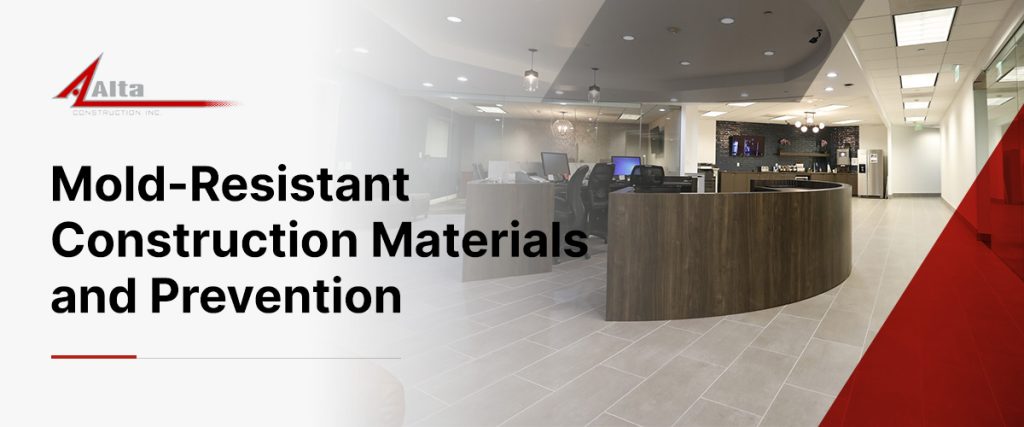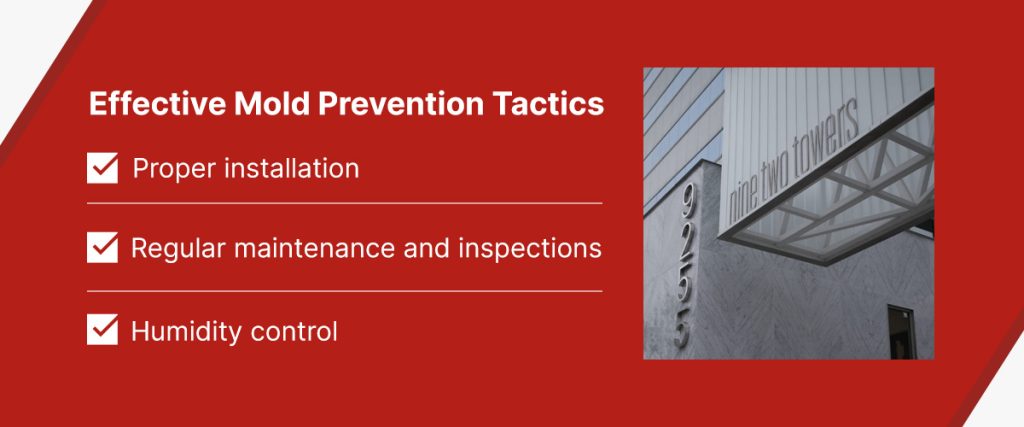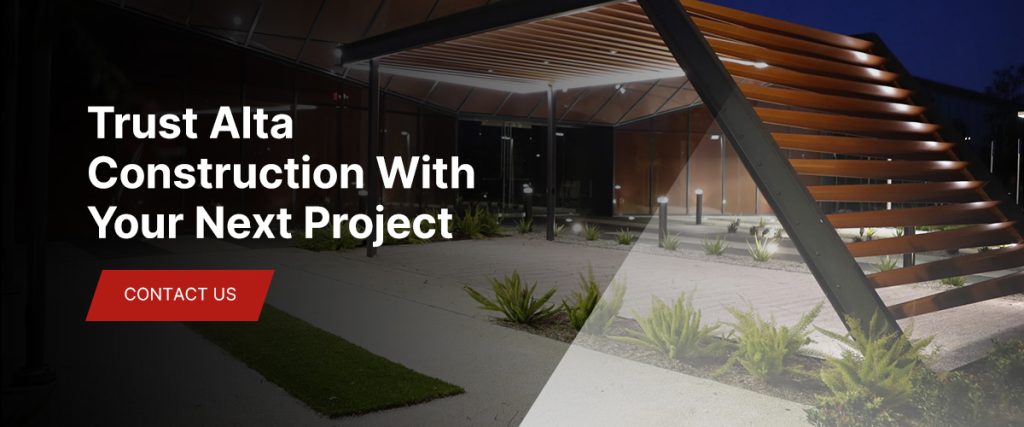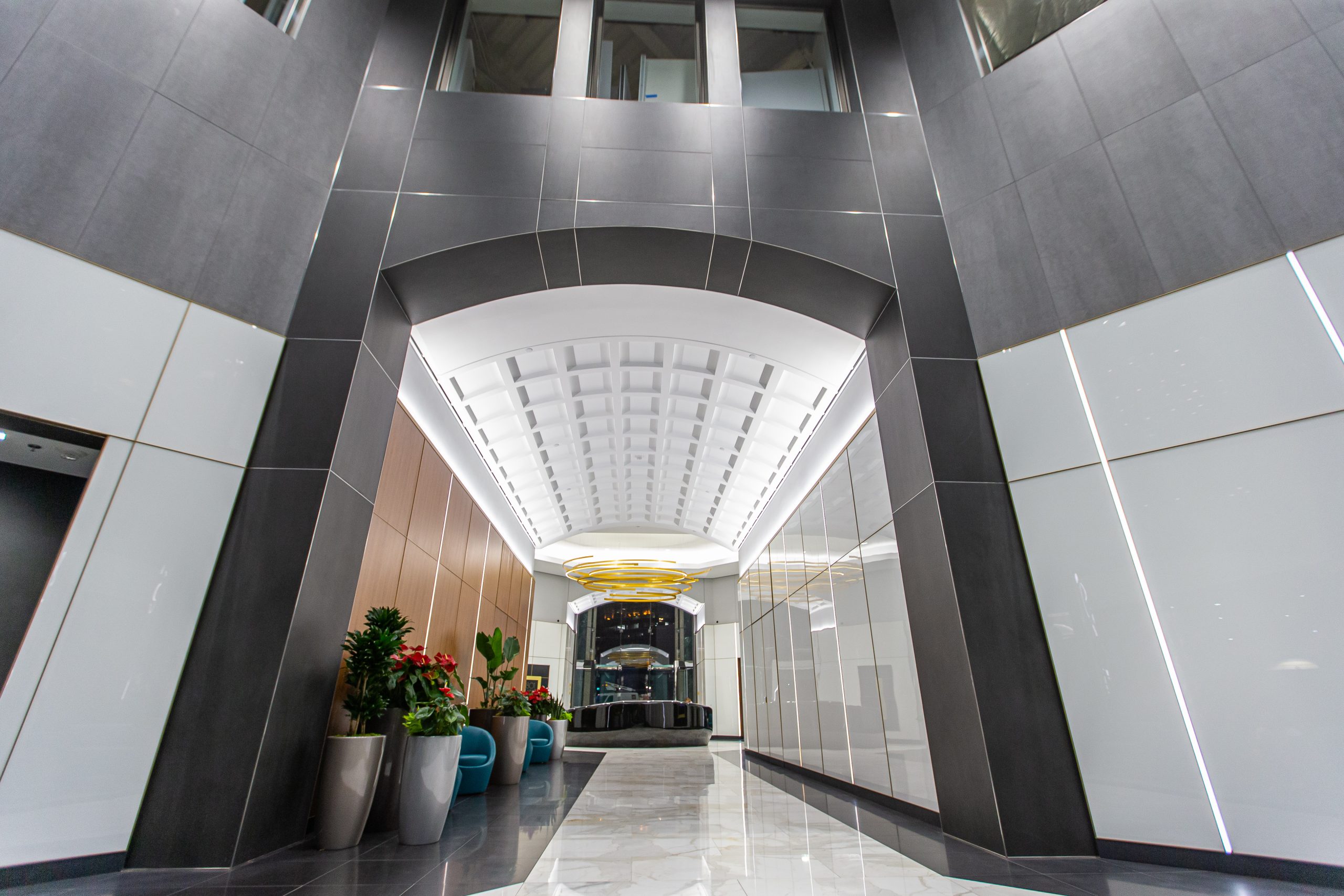
Mold can significantly damage a building’s structure and interior elements, but you can prevent mold growth with advanced construction materials and preventive measures. Mold-resistant drywall, flooring, caulk, coatings, paint, lumber and insulation help protect buildings, maintain mold-free environments and prolong structural integrity.
The Importance of Mold Prevention in Construction
Mold is a naturally occurring fungus that can wreak havoc on indoor spaces. If mold spores land on damp or wet spots, they can quickly grow and damage building interiors over time. They can also cause health complications like allergies and respiratory problems.
Mold thrives on moisture and organic materials such as:
- Wood
- Carpet
- Drywall
- Insulation
- Paper
- Textiles
Thankfully, there are several ways to prevent mold in existing buildings and new construction projects.
Overview of Mold-Resistant Building Materials
Mold-resistant materials have moisture-resistant and antimicrobial properties that help prevent or minimize mold growth. You can benefit from the following mold-resistant materials for construction.
Mold-Resistant Insulation
Mold-resistant insulation materials, such as fiberglass, have antimicrobial properties. Fiberglass is naturally mold-resistant, and some manufacturers add an EPA-approved fungicide layer for extra protection.
Mold-Resistant Drywall
It’s important to understand the difference between water-resistant and mold-resistant drywall before making a decision. The following options are available:
- Mold-resistant drywall: Mold-resistant drywall is the most effective option for mold prevention. It’s made of inorganic materials such as fiberglass and gypsum board.
- Blue board: Blue board offers a level of mold resistance due to its treated blue paper coating. This special coating can withstand high humidity and moisture levels, making blue-board drywall perfect for water-prone areas such as basements and bathrooms. However, moisture control is important for this type of drywall because mold can still grow on it.
- Green board: Green-board drywall is also water-resistant, reducing damage and preventing or minimizing mold growth if a leak occurs. While this may seem like the best option, it’s not as effective as blue-board drywall. Green-board drywall can resist water, but it still has a paper-facing layer. Since paper is an organic material, mold can grow on this layer of drywall when you use green board.
Mold-Resistant Paints and Coatings
Mold-resistant paint is specially formulated to slow or prevent mold growth. Painting interior walls and ceilings with mold-resistant paint is an excellent way to protect your building. This is especially beneficial in moisture-prone rooms such as bathrooms and basements.
Treated Lumber
Some lumber companies treat wood with anti-mold chemicals. These chemicals help prevent or minimize decay, rot and termite damage. The most common treated lumber is pressure-treated, which means the lumber mill submerges it in a preservative chemical tank under high pressure.
It’s important to use a GREENGUARD-certified treated lumber to ensure low chemical emissions and safe indoor air.
Mold-Resistant Flooring
Mold-resistant flooring is typically nonporous and moisture-resistant, and some types contain antimicrobial additives for extra protection:
- Ceramic tile: Ceramic tile is made of clay and fired at a high temperature. Its nonporous nature allows it to repel water rather than absorbing it, providing an environment where mold spores can’t grow.
- Porcelain: Similar to ceramic tile, porcelain is a nonporous flooring option made from clay. It’s fired at a higher temperature than ceramic, which makes it even denser, more durable and more moisture-resistant.
- Vinyl tile: Vinyl tile is a more cost-effective flooring option than ceramic and porcelain tile. Similar to porcelain and ceramic, it’s a nonporous material that resists moisture. Proper installation is crucial for vinyl tile flooring because mold can grow beneath the tiles if they trap moisture. Professionals have the skills and experience to minimize the space under vinyl tiles during installation, leaving less room for water to accumulate.
Mold-Resistant Caulk
Mold-resistant caulk contains ingredients such as enzymes and fungicides to prevent fungal growth and inhibit the development of mold-feeding oils. Acrylic latex and silicone caulk are excellent options for strengthening an area’s mold resistance.
Effective Mold Prevention Tactics
You can also implement effective tactics to prevent mold growth in your facility. Here are some of the best practices for mold prevention in buildings:

- Proper installation: Professional installation is crucial. Ensure you choose a construction firm that prioritizes quality results and focuses on every detail. Expert contractors provide design, installation, sealing and ventilation you can depend on.
- Regular maintenance and inspections: Monitoring for leaks, moisture and mold can help you catch potential complications before they worsen or cause damage. Commercial building owners often schedule annual or biannual inspections. However, it’s best to consult with a licensed commercial building inspector for recommended inspection intervals based on your building’s needs.
- Humidity control: Maintain a relative humidity below 70% in your indoor spaces. Ventilation plays a significant role in mold prevention, so it’s important to install and maintain a quality heating, ventilation and air conditioning (HVAC) system. You can also use dehumidifiers to help control humidity levels.
Benefits of Mold-Resistant Construction Materials and Prevention
Mold-resistant materials and prevention tactics can help reduce the risk of mold in your building. These precautions are crucial for:
- Structural integrity and longevity: Mold prevention helps preserve your building’s structure, materials and interior furniture from structural damage, helping them last longer.
- Safety: A mold-free, structurally sound building is safer for you, facility employees, customers and other individuals who visit your building.
- Facility cleanliness: Preventing mold growth also prevents the unpleasant odors and appearance of mold, providing your clients or customers with a clean, comfortable environment.
- Cost efficiency: If mold damages any part of your building, you may need to pay for various repairs and purchase new materials for flooring, furniture or walls. Mold prevention can help you avoid these extra costs, saving money in the long term.
- Improved air quality and health: Preventing mold growth improves air quality and helps protect the health of your staff and customers. You can help prevent common health complications caused by mold, such as respiratory issues, skin irritation, allergic reactions and neurological effects. This is especially important if you serve vulnerable populations, such as immunocompromised individuals, children and older adults.
Future Trends in Mold Prevention
The following trends can transform the construction industry and enhance mold prevention tactics:
- Smart building materials: Smart building materials can change at least one of their properties as a reaction to external stimuli. For example, self-monitoring materials feature sensors that detect vibrations, strain, moisture or temperature changes. Self-cleaning options, such as hydrophilic materials, can attract water and develop a film to wash away debris.
- Mold prevention nanotechnology: Mold prevention nanotechnology uses advanced techniques and nanomaterials to minimize mold growth on porous materials and surfaces. Nanotechnology coatings can repel water. Antimicrobial nanoparticles in materials or coatings release antimicrobial agents to inhibit mold growth or destroy existing mold.

Trust Alta Construction With Your Next Project
Mold-resistant construction materials and prevention strategies are essential when building or updating your commercial property. You can trust a reputable contractor to help you optimize your building for mold prevention and clean, healthy air.
Alta Construction offers full-service construction, contracting, project management, design and tenant improvements to enhance your commercial space and prevent mold in your building. You can count on us for new projects or retouching services such as mold remediation, leak repair or post-flood reconstruction.
We use cutting-edge technology that helps you track your project’s progress at any time. Our professionals prioritize transparency and communication in every partnership. Contact us to learn more about our services and how we can strengthen your building against mold growth.

